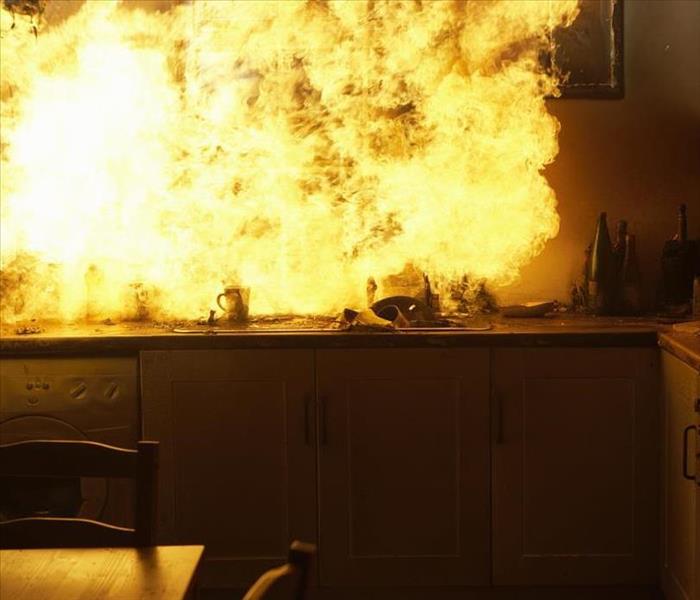Why Are the Residues from A Kitchen Fire Challenging to Remove?
5/14/2020 (Permalink)
SERVPRO Trains in Strategies Specific to Protein-Based Soot Removal for a Successful Outcome in Your Bronx Residence
Residue removal after any residential fire is dependent on an accurate evaluation of the materials that fueled the fire and the characteristics and durability of the surfaces affected. Many fires start in the kitchen and can spread protein-based soot throughout an entire home. The residues created are nearly transparent and are thus hard to see. They carry a particularly noxious smell and can discolor paints, stains, and varnishes if not removed rapidly and entirely.
How Is Protein-Based Soot Created?
The fire damage in your Bronx home varies according to the types of residues produced. A kitchen fire typically begins when foods and cooking oils superheat, or when grease combusts when it boils over, tips, or drips onto a heating element. Residues from this kind of fire present in a mist-like form as the materials evaporate, leaving behind a yellowish film that clings tenaciously to any surface.
What Method Works to Clean Up After a Kitchen Fire?
SERVPRO Fire and Smoke Restoration Technicians (FSRT) use their knowledge of industry best practices mastered during the Institute of Inspection, Cleaning and Restoration Certification (IICRC) courses along with on-the-job experience to remove protein-based fire damage safely and efficiently. We match cleaners to the type of residues, determining which product is most likely to loosen the coating by dissolving or emulsifying. Which type of cleaner and method do we find effective for grease or protein-based residue?
Like dissolves like --
Oily soot responds to an oil-based solvent.
Tight adhesion --
Increasing agitation assists in dislodging the residue through:
- The use of an abrasive tool like steel wool
- The addition of an abrasive inert substance to the cleaning product
Count on the expert fire damage pros from SERVPRO of South Bronx. We have the training, tools, and techniques, along with proprietary cleaning products, just a phone call away. Call us at (347) 590-9902 day or night for a fast response.
To learn more about The Bronx, click here.






 24/7 Emergency Service
24/7 Emergency Service
